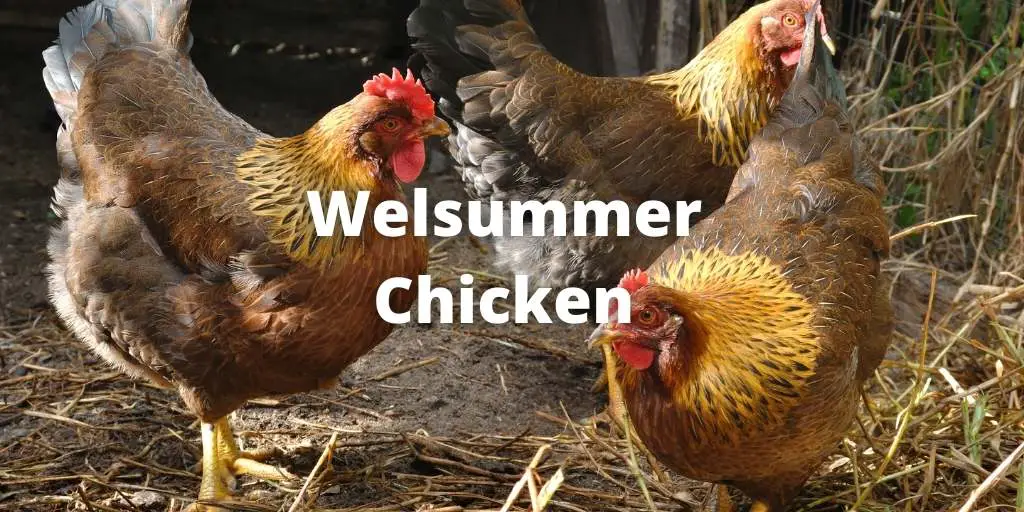The Welsummer chicken is a delightful and hardy breed becoming increasingly popular among backyard chicken enthusiasts.
This European chicken breed is known for its beautiful dark brown eggs, friendly temperament, and attractive appearance; these versatile birds are a fantastic addition to any flock.
This comprehensive breed guide will delve into the history, characteristics, egg production, lifespan, color, size, care, and more aspects of the Welsummer chicken.
We will provide all the information you need to decide if this is the right breed for your backyard.
Introduction: What is Welsummer Chicken?
The Welsummer chicken is a medium-sized, dual-purpose breed developed in the Netherlands in the early 20th century. They are known for their beautiful dark brown speckled, terracotta-colored eggs and friendly, docile temperament.
Welsummer Chicken is famous in the UK and Australia, but they only have a significant follow-up here in the US, which is shocking as they are ‘superstars.’ The mascot, Cornelius Rooster of ‘Kellogg’s Corn Flakes,’ is a Welsummer chicken.
It is believed that the Welsummer breed was developed by crossing local Dutch chickens with various imported chicken breeds.
Some breeds commonly thought to have contributed to the creation of the Welsummer include the Partridge Cochin, Partridge Leghorn, Partridge Wyandotte, and local Dutch chickens, known for their brown egg-laying abilities.
The Welsummer is a versatile bird, ideally suited for small homesteads and larger backyard flocks. They are excellent foragers and can adapt to various climates and environments.
History and Origin of the Welsummer Chicken

The Welsummer chicken was developed in the Dutch village of Welsum, from which it derives its name.
The breed was created by crossing local landrace birds with other partridge variants of breeds such as the Cochin, Leghorn, and Wyandotte.
The goal was to create a chicken that lays a good number of eggs and is friendly. The result was a medium-sized bird that could be used as both eggs and meat.
The breed debuted at the World Poultry Congress in 1921 and quickly gained popularity in Europe, the UK, and eventually the United States.
There are three main color varieties of the Welsummer: the most common Partridge pattern, the rarer Silver Duckwing, and the Gold Duckwing.
While the partridge variety is the most widely recognized, the silver and Gold Duckwing varieties are also stunning and highly sought after by breed enthusiasts. White earlobes, feathers on the shanks, or odd points on the scalp could be some dispositive reasons.
The Welsummers bantam variation was produced in England and Germany in the 1930s. It lays an egg of a lighter color than its standard counterpart.
Recognized Continental Breeds and Varieties (With Chart)
The Welsummer chicken breed has a rich history of acceptance and recognition by the American Poultry Association (APA) and Great Britain’s Poultry Club.
In 1929, the APA officially admitted the Welsummer breed to its Standard of Perfection, recognizing its unique qualities.
Over the years, the APA refined the breed standards and accepted specific varieties. In 1935, the Partridge Welsummer variety was recognized, followed by the Silver Duckwing Welsummer in 1965.
Additionally, the Bantam Welsummer breed and its Partridge and Silver Duckwing varieties were admitted to the APA Standard of Perfection (Continental Birds) in 1991.
The Welsummer breed gained popularity in Great Britain, and in 1921, Great Britain’s Poultry Club officially recognized the Welsummer breed, solidifying its status in the country.
The club refined the breed standards for Welsummers in the 1930s, focusing on traits such as plumage pattern, egg color, and overall conformation. Today, the Welsummer breed remains accepted by the APA and Great Britain’s Poultry Club.
| Organization | Breed | Variety | Description |
| APA (American Poultry Association) | Welsummer | – | Standard-sized Welsummer breed, known for reddish-brown plumage and dark brown eggs |
| APA (American Poultry Association) | – | Partridge (Bantam) | Bantam-sized variety of Welsummer with specific plumage pattern |
| Great Britain’s Poultry Club | Welsummer | – | Standard-sized Welsummer breed known for reddish-brown plumage and dark brown eggs |
Characteristics of the Welsummer Rooster and Hen
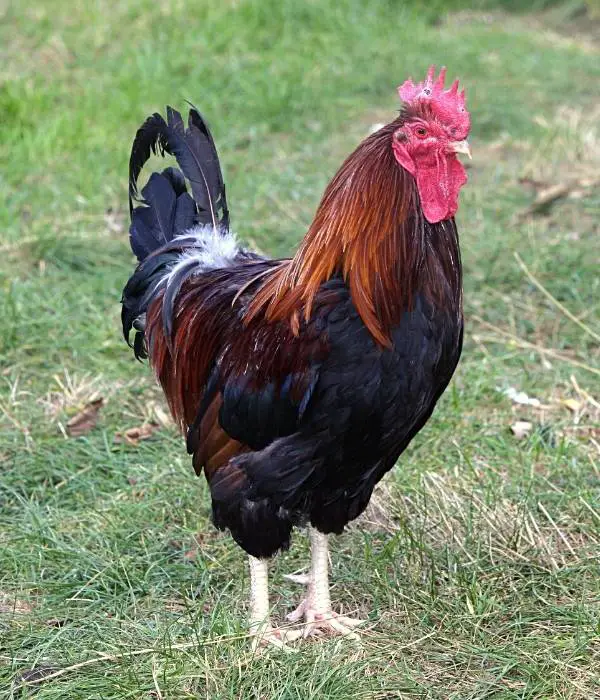
Welsummer roosters are striking, with bright hackles, a darker belly, and a large comb. They are known for their impressive beetle-green tail feathers and iridescent wing bars.
The Welsummer hens, on the other hand, have a more understated beauty, with a dark brown body and lighter brown neck feathers that create a golden mantle effect.
The rooster and the hen have a single comb, red wattles, earlobes, and a short, horn-colored beak.
Their eyes are a unique reddish-bay color, and their legs are a vivid yellow, free of feathers. The roosters typically weigh around 7–8 pounds, while the hens weigh around 5–6 pounds.
Kellogg’s Rooster Breed Connection
The iconic mascot of Kellogg’s Corn Flakes, Cornelius, the rooster, is a Welsummer rooster. This charming connection has undoubtedly contributed to the breed’s popularity and recognition, as Cornelius captures the striking appearance and friendly demeanor of the Welsummer chicken perfectly.
Lifespan of Welsummer Chickens
The Welsummer chickens typically have a lifespan of around 6–12 years, making them a long-lived breed that can provide many years of enjoyment and egg production for their keepers.
Welsummer Temperament and Behavior
Welsummer chickens are known for their calm, friendly, and docile nature. They are generally non-aggressive and fit well with a mixed flock of breeds.
Welsummers are not particularly cuddly birds but are human-oriented and often approach and interact with their keepers, especially if treats are involved.
These intelligent birds are excellent foragers, which can help to reduce feed costs for those who allow their birds to free-range. They are also adaptable to confinement if they have adequate space to roam and explore.
Welsummer Egg Production
Welsummer hens are known for their impressive production abilities, laying around 160–250 eggs annually. Their eggs are large and have a beautiful deep terracotta color, typically with dark speckles distinctive from a standard brown egg.
While the egg production of individual birds can vary, their eggs’ unique and stunning appearance makes them highly sought after by backyard chicken enthusiasts.
Welsummer hens are great at laying eggs but are not known to be very broody, so they are less likely to stop laying eggs to make chicks.
This can be a desirable trait for those who are primarily interested in egg production.
In the cold season, they prefer to lay fewer, which is not unusual, particularly in breeds that haven’t been produced specifically for egg-laying. If you are worrying about summer, you can check some best heaters for poultry farms.
You can read here about chickens that lay colored eggs.
Welsummer Chicken Size and Weight
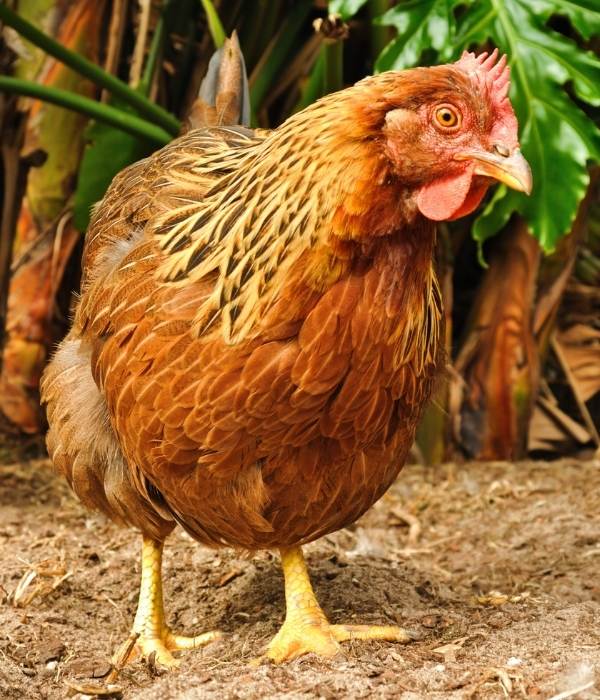
As a medium-sized breed, Welsummer chickens are lighter than other dual-purpose breeds. When hatched, Welsummer chicks typically weigh around 34 to 38 grams (1.2 to 1.3 ounces).
Roosters typically weigh around 7–8 pounds, while hens average around 5–6 pounds. Despite their lighter weight, they are still considered an excellent dual-purpose breed for meat and egg production.
In addition to the standard-sized Welsummer chicken, a bantam variety was developed in the 1930s in England and Germany.
Bantam Welsummers are smaller than their standard counterparts, with males weighing around 34 ounces and females around 30 ounces.
The bantam Welsumer exhibits many of the same characteristics and qualities as the standard Welsumer, but their eggs are lighter in color.
Welsummer Chickens Appearance
Welsummer chickens have a distinctive appearance, with a dark brown body and golden brown neck feathers that create a beautiful contrast.
Their tail feathers are a lustrous beetle-green, and their eyes are a unique reddish-bay color. They have a large single, pointed comb and bright yellow legs free of feathers.
The rooster and the hen have an upright stance and a moderately long and broad back. The rooster’s comb is larger than the hen’s, and his hackles and saddle feathers are a stunning chestnut brown.
The Welsummer chicken is a beautiful and striking breed that will stand out in any flock.
Rooster vs. Hen: Identifying Gender in Welsummer Chicks
One of the benefits of raising Welsummer chickens is their ability to be auto-sexed, meaning the gender of the chicks can be determined shortly after hatching.
Female chicks will have a darker, more distinct pattern and a darker head, while male chicks will have a fuzzier, less-defined pattern. This makes it easier for chicken keepers to select the appropriate gender ratio for their flock.
Benefits of Raising Welsummer Chickens
There are several advantages to raising Welsummer chickens, including
An Attractive Appearance
Welsummer chickens are known for their visually striking appearance. They have a beautiful combination of dark brown and golden brown feathers, which create an eye-catching plumage pattern.
The distinct coloration of Welsummers adds a touch of elegance and beauty to any backyard flock.
Exceptional Egg Production
Welsummer hens are highly regarded as the best brown egg-laying chicken breed. They lay many large, deep terracotta-colored eggs throughout the year.
The rich, dark brown eggs are visually appealing and highly desired by enthusiasts and those who appreciate a diverse egg basket.
Friendly and Docile Temperament
Welsummers are known for their calm and friendly nature. They are known to be docile and easy to handle, making them an excellent choice for families with children or individuals who are new to raising chickens.
Their friendly disposition allows for easier interaction and a more enjoyable chicken-keeping experience.
Excellent Foragers
Welsummer chickens possess excellent foraging skills. They are intelligent and resourceful birds, adept at finding their food when allowed to free-range.
Their natural foraging abilities provide them with a varied and balanced diet and help reduce feed costs for chicken keepers who allow their Welsummers to explore and find food independently.
Adaptable to Various Environments
Welsummers are known for their hardiness and adaptability to different climates and living conditions. Whether in hot or cold climates, they can thrive and remain healthy.
Their resilience makes them suitable for various backyard settings, including urban, suburban, and rural areas.
Problems in Raising Welsummer Chickens
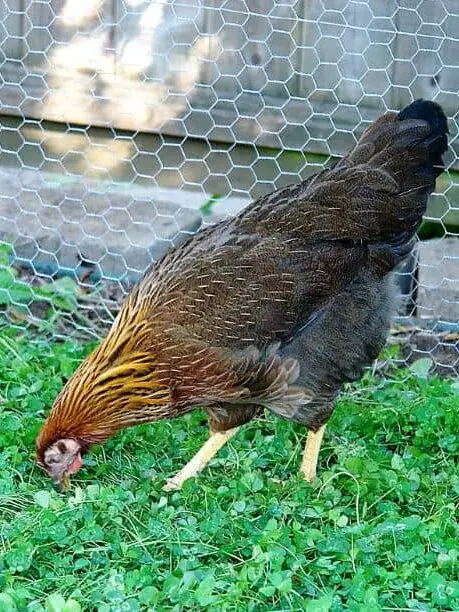
Despite their many positive qualities, there are a few potential issues to be aware of when raising Welsummer chickens:
Noise Levels
Welsummer chickens, despite their generally calm and friendly nature, can become quite vocal when agitated or disturbed.
They may squawk, cluck loudly, or make other vocalizations, especially if they feel threatened or are trying to alert the flock of potential dangers.
While they are not constantly loud, this characteristic can be a concern for those who have close neighbors or live in areas with noise restrictions.
It’s essential to consider the proximity of your neighbors and the potential impact of noise levels when deciding to raise Welsummers.
Inconsistent Egg Production
One aspect of being aware of when raising Welsummer chickens is their somewhat inconsistent egg production.
While they are known for their exceptional abilities, individual hens within the breed may have varying egg-laying patterns.
Some Welsummer hens may consistently lay a high number of eggs each year, while others may have periods of more sporadic production.
Age, health, and environmental conditions can influence egg production. Remembering this when managing expectations and planning for egg availability is essential.
Poor Maternal Instincts
Welsummer hens are not mainly known for their broodiness or maternal solid instincts. This means they may not be as inclined to sit on eggs and hatch them or exhibit nurturing behaviors towards their chicks.
If you are interested in hatching Welsummer chicks, you may need to rely on an incubator or a broody hen from another breed to hatch the eggs successfully.
It is worth noting that this characteristic may vary among individual hens, as some Welsummers may still display broody behavior, but it is not a consistent trait of the breed as a whole.
Caring and Raising Welsummer Chickens
Choose Your Flock Ratio Early
When raising Welsummer chickens, it’s important to decide on the desired gender ratio for your flock early on. The unique advantage of Welsummer chicks is that they can be auto-sexed, meaning their gender can be determined soon after hatching based on specific characteristics.
By deciding on the desired ratio of hens to roosters from the start, you can ensure a balanced flock that meets your specific goals, whether maximizing egg production or maintaining flock harmony.
Socialize Your Birds
To foster a friendly and interactive relationship with your Welsummers, it’s beneficial to socialize with them from a young age. Spend time handling and being around the chicks regularly, providing gentle interactions and positive experiences.
This helps them become accustomed to human presence, making them more comfortable and less skittish around you. Regular socialization can also encourage your Welsummers to approach you for treats and attention, further strengthening the bond between you and your birds.
Provide Ample Space for Foraging
Welsummers are natural foragers and love to explore their surroundings. It’s important to provide them with ample space for foraging and roaming, whether in a free-range environment or a spacious run attached to their coop.
Allowing them to engage in natural behaviors, such as scratching the ground for insects and pecking at vegetation, keeps them mentally stimulated and helps satisfy their foraging instincts.
Access to diverse vegetation and natural elements enriches their environment and promotes their overall well-being.
Be Mindful of Climate
While Welsummers are known for their hardiness and adaptability to various climates, they must consider their specific needs in different weather conditions. During hot weather, ensure they have access to shade and cool water to help them regulate their body temperature.
Providing a well-ventilated coop and ample shade can help prevent heat stress. In colder climates, monitor their combs and wattles for signs of frostbite and provide a warm, draft-free shelter to protect them from freezing temperatures.
By being mindful of the climate and making appropriate adjustments, you can ensure the health and comfort of your Welsummer flock throughout the seasons.
Other FAQs
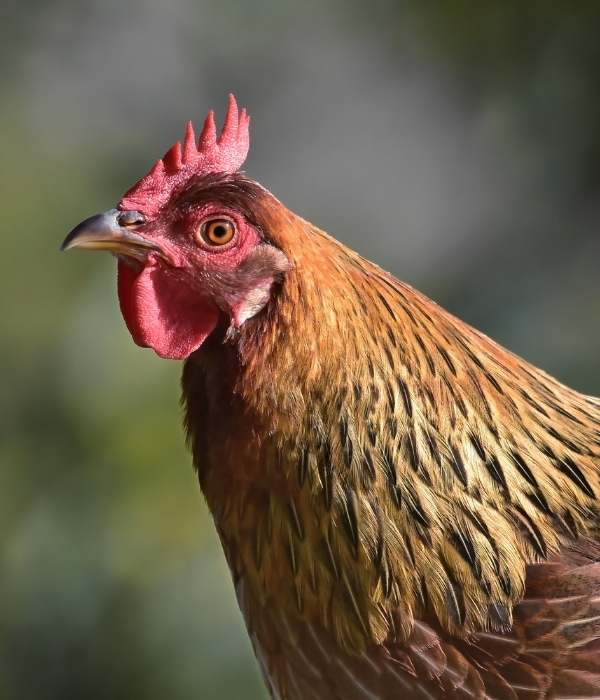
Are Welsummer Chickens Autosexing?
Depending on their feather patterns and coloration, Welsummer chicks can be auto-sexed shortly after hatching.
This means that you can visually identify the gender of the chicks without the need for additional methods such as vent sexing or waiting for secondary sexual characteristics to develop.
The male and female chicks will have distinct feather patterns and color variations, making it relatively easy to determine their gender early on.
How Many Eggs Do Welsummer Chickens Lay?
Welsummer hens are known for their impressive egg-laying capabilities. On average, a Welsummer hen will lay between 160–250 eggs annually, although individual variation may occur.
The eggs are typically large and have a deep terracotta color, which is highly desirable for those who appreciate diverse and visually appealing egg baskets.
Are Welsummer Chickens Friendly?
Yes, Welsummer chickens are generally known for their calm, friendly, and docile temperament. They tend to be gentle, making them suitable for families with children or individuals new to raising chickens.
Welsummers can be easily handled and are often comfortable with human interaction when properly socialized from a young age.
What Does a Welsummer Chicken Look Like?
Welsummer chickens have a distinctive and attractive appearance. They have a dark brown body with golden brown neck feathers, creating a beautiful contrast.
Their feathers typically display intricate patterns, giving them an eye-catching look. Welsummers have a single, pointed comb, bright yellow legs, and reddish-bay eyes. Overall, their appearance adds a touch of elegance and beauty to any backyard flock.
Are Welsummer Chickens Cold Hardy?
Yes, Welsummer chickens are considered cold-hardy. They can tolerate colder climates well, thanks to their hardiness and adaptability. However, it’s important to note that their large combs and wattles may be more susceptible to frostbite in freezing temperatures.
Providing appropriate shelter, ventilation, and protection from extreme cold weather can help ensure their well-being during colder months.
Are Welsummer Chickens Good Layers?
Yes, Welsummer chickens are known for their great ability to lay eggs. They are considered good layers, consistently producing many eggs each year.
The deep terracotta-colored eggs they lay are visually appealing and highly regarded for their rich flavor and quality.
Are Welsummer Chickens Aggressive?
Welsummer chickens are generally non-aggressive and have a peaceful demeanor. They are known to coexist well with other chicken breeds and can fit in smoothly within a mixed flock.
Of course, individual temperament can vary, so it’s always important to monitor their behavior and provide adequate space and resources to promote a harmonious flock environment.
How Big Do Welsummer Chickens Get?
Welsummer chickens come in different sizes based on their gender. Welsummer roosters typically weigh around 7-8 pounds (3.2-3.6 kg), while hens tend to be slightly smaller, averaging around 5-6 pounds (2.3-2.7 kg). These weights serve as general guidelines and individual birds may vary in size.
Are Welsummer Chickens a Heritage Breed?
Yes, Welsummer chickens are considered a heritage breed. While their history may not be as extensive as other ancient breeds, they possess unique characteristics and have been selectively bred through traditional practices.
Their distinct appearance, excellent egg production, and historical significance make them a heritage breed.
Are Welsummer Chickens Loud?
Welsummer chickens can vocalize when agitated or disturbed but are not constantly loud. Like most chickens, they may make clucking, squawking, or crowing sounds.
However, their noise levels are generally moderate and do not pose a significant disturbance. Sometimes they are not suitable for urban homes.
Conclusion: Is Welsummer Chicken Right For Your Backyard?
Prince Charles is a supporter of sustainable agriculture and heritage poultry breeds. He promotes the conservation of rare breeds like Welsummer chickens, emphasizing the importance of genetic diversity and cultural preservation.
His involvement raises awareness about sustainable farming and the significance of Welsummers in heritage breed conservation.
The Welsummer chicken is a great addition to any backyard flock because of their striking appearance, friendly temperament, and ability to lay eggs.
This breed offers a perfect combination of beauty, productivity, and personality, whether you are a seasoned poultry keeper or just starting.
If you are looking for a hardy, adaptable, and low-maintenance chicken breed that will provide you with beautiful, dark brown eggs and years of enjoyment, the Welsummer chicken might be the perfect choice for your backyard.
